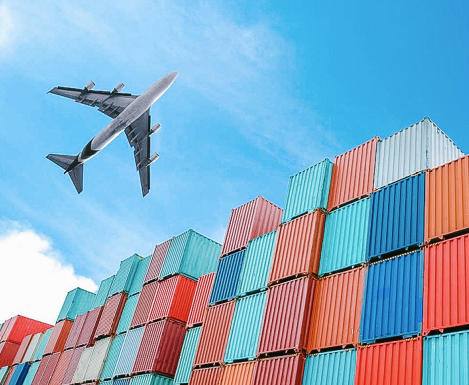Over the last 15 years, the U.S. government has increasingly applied secondary sanctions as a tool to expand the reach and effectiveness of U.S. primary sanctions programs. With the use of primary sanctions, the U.S. government prohibits U.S. entities and individuals from engaging economically with designated foreign entities and individuals. Primary sanctions also place limitations on transactions between non-U.S. parties that have a ‘U.S. nexus’ – such as involvement by a U.S. person, U.S.-originating goods, a transaction taking place within the U.S., or financial transactions routed through U.S. banks for currency exchange.
The U.S. Department of the Treasury’s Office of Foreign Assets Control (OFAC) enforces primary sanctions through civil and criminal penalties, sometimes in conjunction with the Department of Justice and state-level law enforcement. OFAC is also responsible for applying secondary sanctions. Once OFAC decides that a foreign party has engaged in an activity prohibited under secondary sanctions, the U.S. Treasury or Department of State will restrict access to U.S. markets in varying ways, depending on the severity of the situation.
How secondary sanctions differ from primary sanctions
Unlike the civil or criminal penalties that come with primary sanctions, secondary sanctions seek to persuade, not force, foreign people or entities to forgo or cease legal transactions happening outside the U.S. with sanctioned persons. In other words, secondary sanctions seek to prevent commercial activity with sanctioned parties – even if there is no U.S. nexus and the transacting parties are acting within the laws of the foreign jurisdiction(s). If a party is in violation of secondary sanctions, they could face measures such denial of import or export licenses, loan denials from U.S. financial institutions, and even placement on the Specially Designated Nationals (SDN) and Blocked Persons List.
The ’persuasion factor’ behind secondary sanctions is easy to understand. Essentially, they say, “You can either keep transacting with the sanctioned party and lose your access to U.S. markets, or you can stop transacting with the sanctioned party and maintain access to U.S. markets.” Based on the massive benefit of having access to U.S. markets, most parties choose to comply with OFAC’s secondary sanctions rules. Of course, this type of coercion applied by the U.S. government on otherwise normal commercial activity in foreign jurisdictions has been heavily criticized by many other nations as extraterritorial application of U.S. law. Despite this common complaint, U.S. presidents and Congress have continuously shown a willingness to impose secondary sanctions against entities and people in such foreign jurisdictions as China, Iran, North Korea, Russia, and Syria.
The most recent secondary sanctions were established on December 22, 2023, when the Biden Administration issued Executive Order (EO) 14114 that subjects foreign financial institutions (FFIs) to secondary sanctions risks when they conduct or facilitate certain Russia-related transactions. According to sanctions legal experts Gibson Dunn, “These new regulations are noteworthy not simply because they create new secondary sanctions risks for foreign banks and other financial institutions, but also because they expose these financial institutions to such risks based on the facilitation of trade of certain enumerated goods and do so under a standard of strict liability.”
It’s also important to note that EO 14114 applies to FFIs that unknowingly violate the new secondary sanctions.
How bank compliance leaders can comply with secondary sanctions
It’s clear that the U.S. Treasury has found secondary sanctions to be an effective tool in their support for U.S. policies, and Treasury leaders seem to recognize that these new sanctions place a growing burden on FIs to perform more and enhanced due diligence, especially in the area of trade finance. After all, EO 14114 came with a White House Statement that says FFIs risk losing access to the U.S. financial system “if they facilitate significant transactions relating to Russia’s military-industrial base.”
But OFAC wants to help FFIs comply with secondary sanctions. It published a compliance advisory that guides FFIs on how to identify sanctions risks and implement controls aligned with EO 14114. As one of the highlights, OFAC called out the need for FFIs to review their customers bases to determine exposure with specific sectors, entities and individuals. The guidance also notes that this customer review should be seen as an additional measure to normal, ongoing customer due diligence efforts and procedures.
Of course, it’s easier said than done when it comes to performing customer due diligence (CDD) and know your customer (KYC) checks on an ever-expanding SDN lists related to increasingly complex primary and secondary sanctions programs. Compliance teams have found it hard to grow and continuously scale to meet new and evolving requirements. For this reason, many FIs and FFIs are adopting AI Agents technology to help people scale easily and perform work at breakneck speeds.
As AI Agents, AI Agents are proven technology controls that compliance organizations use as part of their risk mitigation toolkit. Easier, faster and cheaper than hiring employees or outsourcing, these AI agents quickly scale team capacity by fulfilling complete level 1 analyst job roles in functions like CDD, KYC, pKYC, sanctions screening alert review, adverse media monitoring, and transaction monitoring investigations.
They’re smart right out of the box — like hiring an employee with five years of experience. By automating the tedious work, these AI Agents free your analysts to focus on the instances that bring the most risk to the business.
Click here to learn how our AI Agents can help prepare your anti-financial crime compliance teams for the increasingly common use secondary sanctions and the expanded need for ever more CDD and KYC procedures.


























